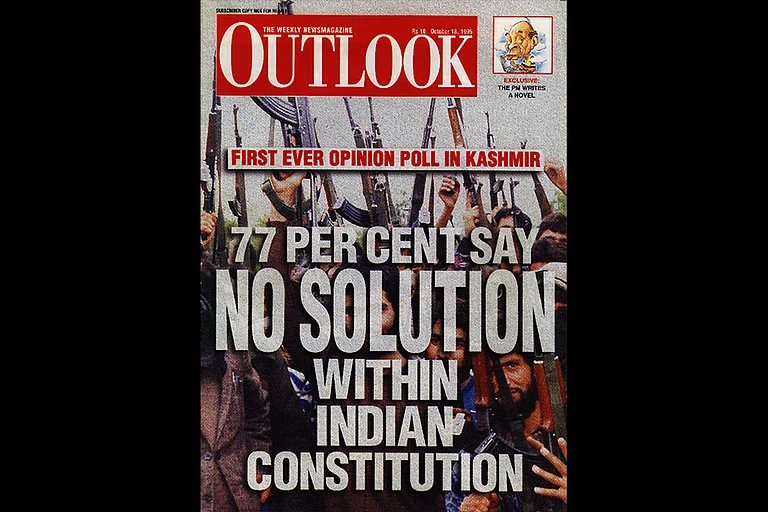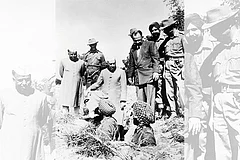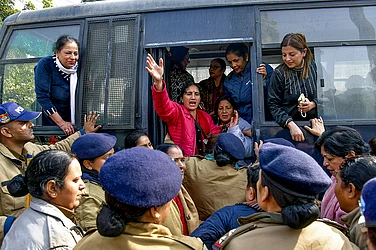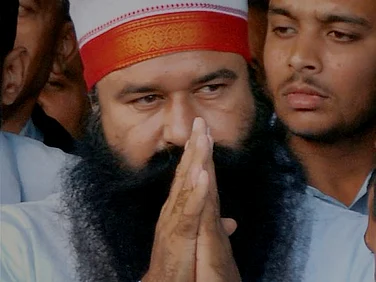When Jawaharlal Nehru became prime minister, there was euphoria across India on gaining independence, but it was also a time of crisis. A long and devastating colonial subjugation was ending. The world was emerging from the ravages of World War II. India was racked by poverty, illiteracy and ill-health. Access to roads and electricity was inadequate. The world witnessed a Cold War, militarisation and the formation of blocs.
A comparison with what has happened in Pakistan helps us to understand the difficulties faced by a newly independent nation. Both belong to the same stock, got independence simultaneously and had similar history and structures of governance. The two nations, which started with similar circumstances, have had divergent development paths, principally because of the vision and the nature of their political leadership.
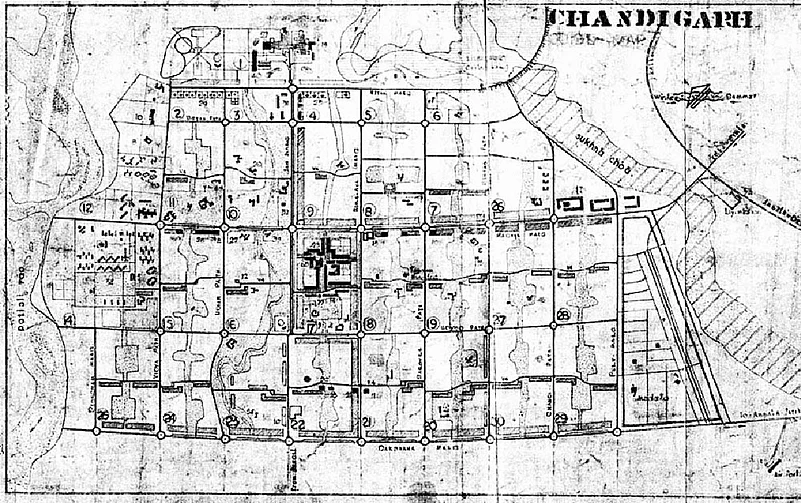
The leadership in India asserted its independence—it stayed out of the emerging great power blocs and provided the vision of the Non-Aligned Movement to the emerging free nations. In contrast, Pakistan joined the Western bloc, militarised and could not break the shackles of feudalism. It allowed the military to dominate the nation and went for theocracy and not secularism. Democracy did not have a chance to flourish because the political leadership was weak.
Historical narratives are always tricky since they require interpreting the past with present-day lenses. For instance, during the height of the Mughal rule, with Akbar at the helm, there was no electricity, no cars or airplanes or telephones. From today’s perspective, the country was obviously underdeveloped. But is that a fair judgement? Several factors need to be taken into account such as the availability of technology, resources and the prevailing social situation.
In 1947, India lacked the resources and the technological capability of the advanced nations. The Indian leadership had little experience of governance and administration. Communities were deeply divided and Partition put an enormous strain on the nation.
The initial conditions matter. And they were vastly different between 1947 and 2014. In 2014, the new government started with a robust economy, growing at 7.76 per cent in the first quarter of 2014-15. It had recovered from a low of 4.44 per cent in the fourth quarter of 2012-13. In contrast, Nehru started with little resources and huge problems like Partition.
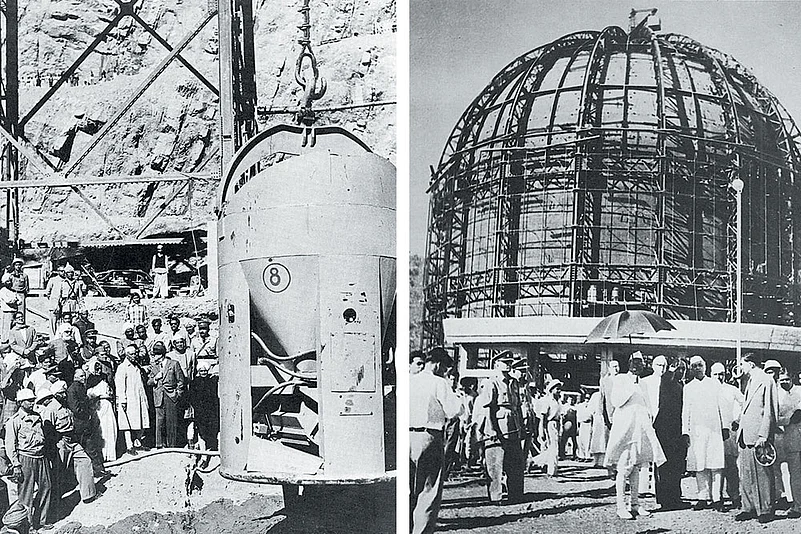
In 1947, the leadership lacked political and administrative experience. The then prime minister of the United Kingdom, Winston Churchill, had predicted that India would collapse. Without a readymade template, development had to be initiated—a new path had to be charted.
Institutions give direction to a society. They were at best weak at that time. For instance, a capitalist economy—which India was trying to become—requires a strong financial system, including banking and the stock market. Rural areas require markets close to the farmers. Workers require social protection, which was hardly available, except in pockets. Independent judiciary, bureaucracy and police are required, but they were in the colonial mould, designed to subjugate people and not to develop the nation.
The nation was largely feudal, agrarian and rural. A vision was needed to develop the nation to take people out of poverty and enable them to live a civilised existence. So, India started its development with a huge handicap, as was also true for many other newly independent nations. Fortunately, the Indian leadership believed that individuals are not to blame for their problems since these were the result of the collective deprivation hoisted by the colonial rulers. For example, literacy was only 16 per cent in 1951 because schools were few.
Thus, the leadership decided that social problems had to be tackled collectively via the instrumentality of state intervention via the public sector. It created infrastructure, both social (education and health) as well as physical (roads, railways and power). This also helped India to loosen the grip of its erstwhile colonial ruler. In contrast, many newly independent nations faltered on this score and have remained dependent—politically and economically—on their former colonial masters.
The leadership set into motion modernisation through the spread of education, scientific temper and research and development (R&D). Indian Institutes of Technologies (IITs), Council for Scientific and Industrial Research (CSIR) labs, agricultural universities, Atomic Energy Establishment (now the Bhabha Atomic Research Centre), Indian Space Research Organisation (previously called INCOSPAR) and so on were set up. This led to a diversified economy which was producing everything—from pins to nuclear power.
Thus, the base for India’s future development was set up during the 1950s, in spite of an acute shortage of resources. Non-alignment helped India in charting an independent path and getting aid from both the advanced capitalist countries as well as the Soviet bloc.
In 2014, the new government started with a robust economy, growing at 7.76 per cent in the first quarter of 2014-15. In contrast, Nehru started with little resources and huge problems like partition.
That India made many mistakes in its developmental path after Independence goes without saying. R&D remained weak and infrastructure development was slow. Development followed a top-down approach, so poverty persisted and inequality increased. People’s commitment towards the nation weakened over time, resulting in alienation, increased corruption and policy failure. The mistakes made were not apparent to the policymakers since their consequences became evident only over the long term.
In contrast, the mistakes made since 2014 were obvious and with immediate consequences that should have been anticipated. Demonetisation and the structurally faulty GST are two examples that have damaged the vast unorganised sector of the economy, and therefore, the economy as a whole. Consequently, the economy has repeatedly faced a demand problem and lost growth momentum. In contrast, in the 1950s, it was recognised that employment would be provided by the small and micro sectors and it needed both promotion and protection.
History is full of examples of nations making mistakes and facing their consequences for long. India is no exception. Its ruling elite, by the 8th century, believed that it had all the knowledge that there was. This set back knowledge generation as compared to West Asia and Europe after the Renaissance. It led to narrowness in thought and defensiveness about oneself. We need to learn from history.
Today, the rulers are talking of ‘decolonising’ the Indian mind. But they are confused and are inviting foreign universities to India to set up campuses to create world-class universities, little realising that the foreign universities will bring their own framework and not develop an indigenous one. Further, technology is largely imported since R&D is not robust. R&D expenditure as a share of GDP is 0.7 per cent, which is very low when compared to other big economies. Nehru talked about creating a scientific temper among people to replace dogmas and obscurantism. In contrast, in the last one decade, false narratives are being created and people are being told to be proud of that, and not search for the truth.
Since an economy grows over time, its base keeps changing. So, any evaluation of the past has to be placed in the correct perspective. The starting point has to be kept in mind. Also, as the economy grows, more resources become available for development. Thus, the base for growth keeps getting enlarged.
The rate of growth of the economy has increased since the economy has changed structurally. Agriculture usually grows at two to three per cent per annum, while the service sector can grow between eight and 12 per cent. Hence, as the economy modernises and the share of agriculture declines, that of the service sector increases, and the economy’s rate of growth rises.
India’s average growth rate between 1901 and 1951 was 0.75 per cent and it increased to an average of 3.5 per cent between 1950 and 1980—a huge shift in the growth rate. This further increased to an average of 5.2 per cent between 1980 and 2002 and to an average of eight per cent between 2002 and 2009. This increase is largely a reflection of the rapid growth in the service sector, which became the dominant sector of the economy after 1979.
Since an economy grows over time, its base keeps changing. So, any evaluation of the past has to be placed in the correct perspective. The starting point has to be kept in mind.
Be that as it may, the increase in the average growth rate has implications for absolute numbers. At an average growth of one per cent per annum, the size of the economy doubles in 70 years. At 3.5 per cent, it doubles in 21 years. At 5.2 per cent, it doubles in 13.5 years. And at eight per cent, it doubles in nine years. Thus, the structural change has resulted in absolute numbers rising over time and making it appear that now the economy is doing well compared to earlier times. But clearly, the earlier growth leads to later dynamism.
Rapid growth leads to a build-up of resources as capital accumulates and enables more to be done. In turn, that depends on the annual investment like on education, health and physical infrastructure. These help enhance the productivity of workers. So, investment increases the economy’s capacity (potential) to produce more and grow faster.
In the 1950s, the economy was small, the people were poor and investment was low. Investment (Non Distributable Cash Flow, or DCF) was 3.4 per cent in 1950-51, while in 2012-13, it jumped to 28 per cent. Thus, while in 1950-51, out of every Rs 100, only Rs 3.4 was available to put into education, health, infrastructure, factories and agriculture, in 2012-13, Rs 28 was available—an eightfold increase. Further, the real national income increased 28-fold by 2019-20. So, in real terms, almost 224 times more funds were invested in 2019-20 as compared to 1950-51, and the country could achieve far more than during Nehru’s time.
In 1950-51, the Centre and the states could raise 6.69 per cent of GDP as tax revenue; now the figure is 17 per cent. The deficit in the budget was 0.04 per cent of GDP in 1950-51, while the fiscal deficit now is 5.8 per cent of GDP. So, earlier the resources available with the government were 6.73 per cent of GDP, while now they are about 27 per cent of GDP—a four-time increase. Since the GDP itself has increased, the resources spent by the government are now 112 times greater than in 1950. A lot more schools, colleges, roads, railway tracks and toilets can be built than in 1950. The consumption of the well-off was restricted to allow savings to increase. This was decried as a socialist policy whereas it was required to build the base of capitalism.
Nehru emerged from the freedom movement which had worked to unite all Indians—whichever caste or community they belonged to. Promoting secularism was central to this. Partition had aggravated animosity across communities, but there were attempts to unite them. The leadership had appealed to the higher instincts of people and worked to foster a common goal of living in harmony and progress. There has been a reversal in this trend with the rise of communalism because of the narrowing of the vision, post-Nehru.
Nehru also had to contend with the entrenched feudal attitudes, poor capabilities in the population due to lack of education (literacy was 16 per cent). Scientific temper was sought to be promoted among the populace, which was steeped in superstition, dogmas and prejudices.
Technology available during the two periods being compared, determines possibilities. A sea change occurred between 1950 and 2023. The levels of automation and use of AI have grown exponentially compared to the 1950s. Then there were no semiconductors and desktop computers. Mobile phones appeared in the 1990s and e-commerce and e-banking in the 2000s. The world over, telecom, travel and communication have transformed since the 1990s, and impacted the fields of medicine, teaching and designing.
Compared to 1947, bulldozers and cranes have now become ubiquitous at construction sites. The use of tractors, harvester combines, and threshers in agriculture has displaced bullocks and ploughs. But employment generation has suffered.
Comparing Nehru’s era with the present is comparing the incomparable. New technology is available globally and resources and social structures are different. The fact that more has happened in the last nine years than in the previous 67 years is due to structural changes and a consequence of compound growth rate. Today, 224 times more capital is available than in 1950. So, there is much to commend the Nehru era with its very limited availability of resources.
(This column is partly based on the author’s earlier article, ‘Modi Rule vs Nehru’s Era: Comparing the Incomparable’, which was published in Mainstream Weekly. Views expressed are personal)
(This appeared in the print as 'Economic Modernist To Populist Personalism')
MORE FROM THIS ISSUE
Arun Kumar is a retired professor of economics, Jawaharlal Nehru University, New Delhi









